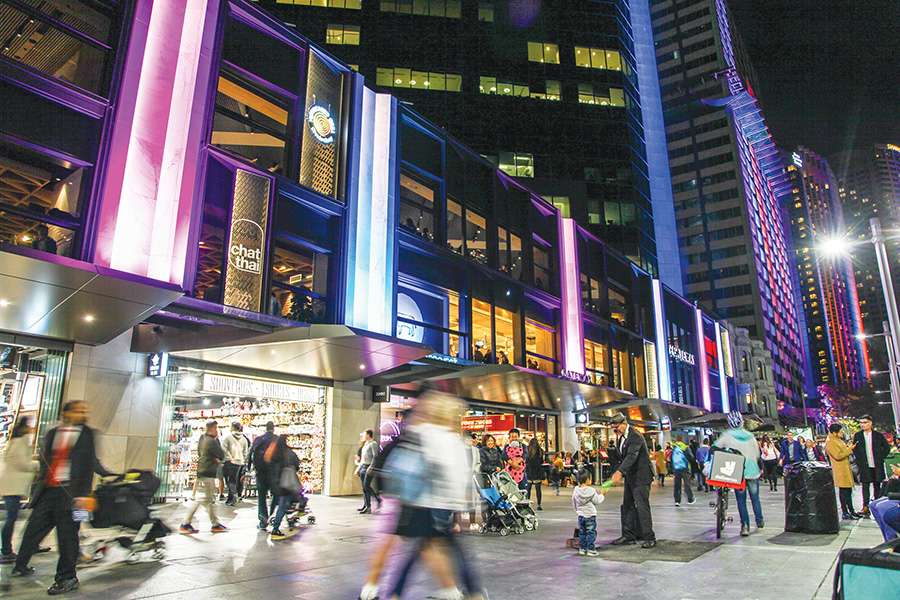CBRE’s latest Australian CBD Retail Vacancy H2 2023 report highlights that of the four capital cities surveyed, Melbourne continues to record the lowest vacancy in the country at 7.37% as well as the largest vacancy reduction of -330bps.
The Sydney CBD also recorded a decline, of 275bps, resulting in an 8.1% vacancy. Brisbane and Perth each had a marginal tightening to have vacancies of 18.7% and 25.3%% respectively.
CBRE’s head of retail research Amita Mehra noted, “Overall, vacancy has tightened nationally. The return to office, coupled with increased tourism and international student inflows, has led to more foot traffic in CBDs, supporting occupier appetite for floorspace within these markets.”
Cost of living pressures continued to decline over H2 2023 with the CPI dropping from 6% to 4.1% in the December quarter. Despite the relatively stagnant growth seen in discretionary spending over the year, overall levels have remained stable. The report estimates discretionary spending to grow in H2 2023 if interest rate cuts commence.
The report showed the total retail sales in Australia were near $425 billion in 2023. This was 60% higher than the 2013 spend of $259 billion.
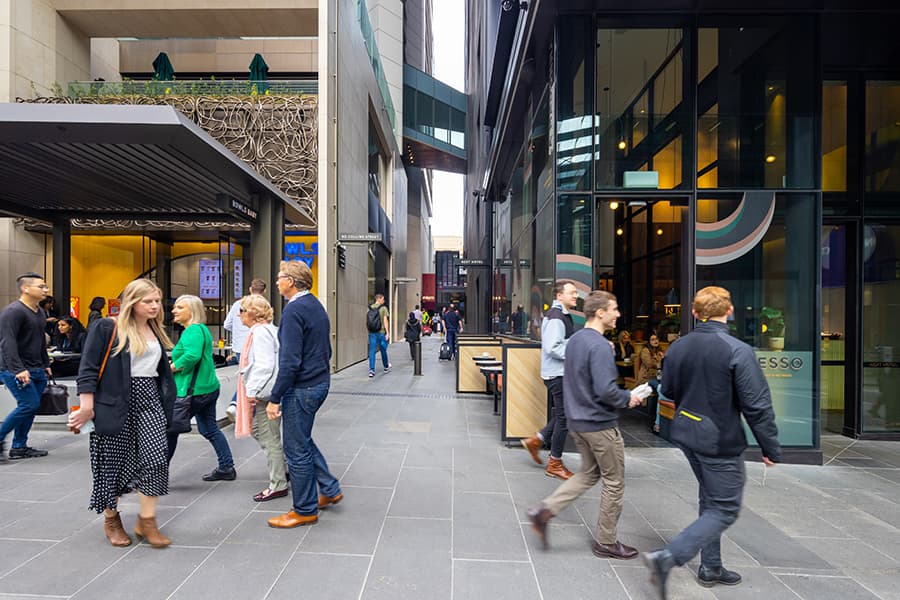
Collins Street, Melbourne
CBRE’s Head of Retail Property Management & Leasing Sheree Griff said Australian’s 2024 retail landscape was positive, despite cost-of-living pressures.
“Bricks-and-mortar spaces remain highly desirable to retailers in ensuring their brands are vibrant and have a purposeful vibe that fosters a culture of innovation, as evidenced by the current flight to quality trend.”
“Retail sales growth is attributed to consumers seeking to look good and feel good, with the strongest sales being reported in the wellness sector, cafes and restaurants.”
“Our view for 2024 is that leasing growth will occur across all markets as retailers partner with landlords to evolve and meet the live, work, and play needs of consumers.”
Around the grounds
Sydney: CBRE’s Australian Head of Retail Leasing Leif Olson said retail sales growth and return to the office has underpinned a reduction in vacancy.
“Sydney is viewed as a very good place for international brands to do business, given Australia’s strong and safe economy and consumer spending power. Retailers are focusing on their connection to consumers, which has resulted in bigger, curated experience stores – a trend we’re seeing across the globe,” said Olson.
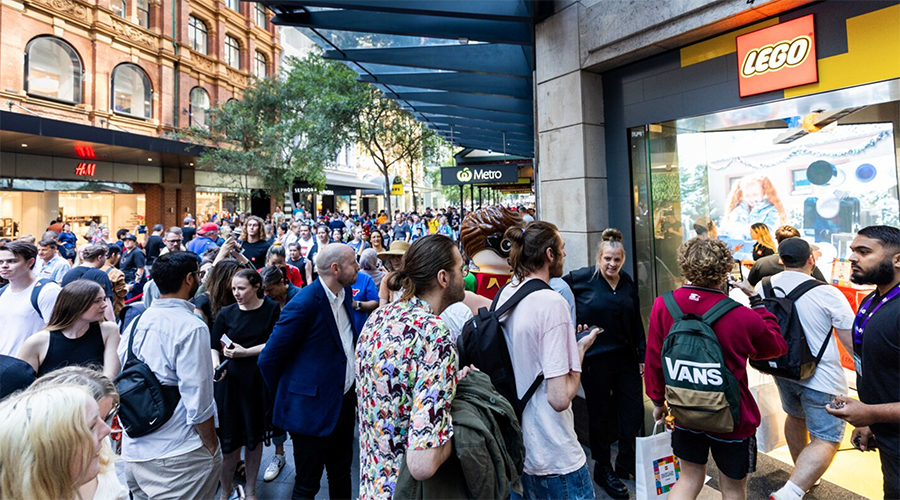
Lego store, Sydney
The Sydney reduction represented the first half-yearly contraction since H1 2022 and the largest movement on record since H1 2021.
Despite overall vacancy contracting, strip retail vacancy softened to 7.9%. However, Olson said Sydney’s CBD core had continued to benefit from a strong inflow of global brands securing flagship tenancies in strip locations. Demand for core strip locations in the CBD remains strong as occupiers seek to promote brand awareness and push product sales.
The openings over the past six months include the world’s largest Lego store in Pitt Street Mall (900m2) and RM William’s on George Street (460m2).
Centre retail recorded the largest vacancy reduction over H2 2023 to 8.1%, driven by the increasing return of CBD workers. This follows a stronger performance of luxury brands and F&B over H2 2023, especially in food courts, such as in Westfield and the MLC Centre.
Melbourne’s CBD vacancy across all three retail categories decreased over H2 2023, with the largest recorded declines noted in laneways & arcades and strip retail, at 3.6% and 3.5% respectively. Both categories ended H1 2023 with vacancy levels above 10%, driven by a few non-core locations.
CBRE Director, Retail Leasing, Jason Orenbuch noted, “Significant bifurcation is evident in both categories, with non-core locations exhibiting significantly higher vacancy than core locations. While overall vacancy has declined over the period, tenant preference for vacant space appears to be concentrated in limited locations.”

Bourke Street Mall, Melbourne
This is equally relevant for Melbourne’s CBD shopping centres, with a more than 10% spread in vacancy observed between core and non-core centres. The strength of fashion retailers despite rising interest rates and cost of living pressures, continues to be a major factor for the decline in centre vacancy.
“Melbourne’s CBD is undergoing a period of significant change, with major developments taking place throughout the city landscape. One of the most notable is the new metro tunnel project which will see new stations sprawled from North to South and including a number of new retail outlets throughout”, Orenbuch said.
“Multiple other arcades and significant parts of existing centres were undergoing major redevelopment as of H2 2023. We expect these developments to continue to spur shoppers to re-enter the CBD over 2024, creating strong demand across the city.”
Brisbane’s CBD retail vacancy decreased in H2 2023 by 83bps to 18.7% vacancy. Brisbane’s tightening vacancy rate can be attributed to a tenant flight-to-quality with high demand for flagship stores in prime positions and an overall increase in CBD visitation.
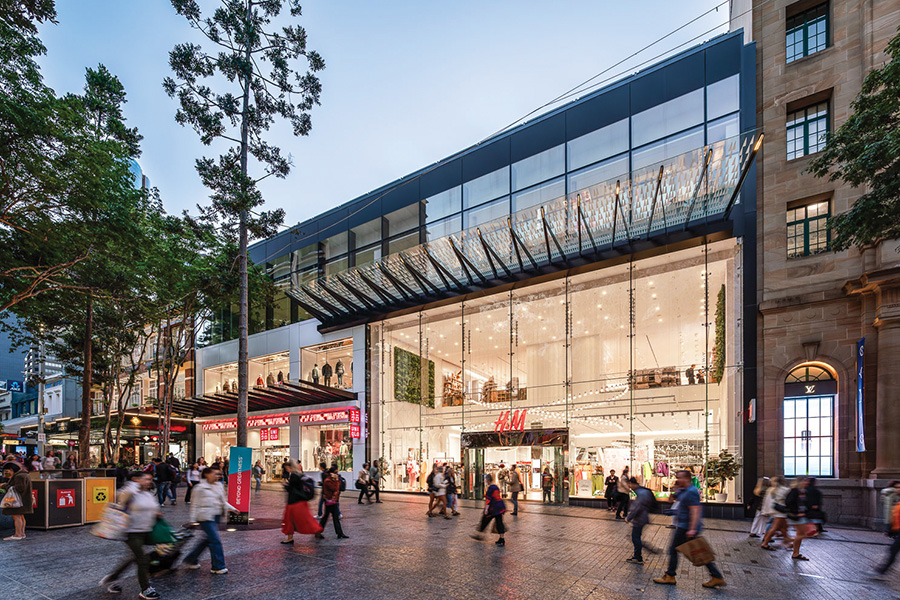
Queen Street, Brisbane
CBRE Associate Director, Retail Leasing, Tanaka Jabangwe said, “Other contributing factors to note include a solid return to office, strong population growth and a steady improvement of international tourism.”
“Arcade retail vacancy increased slightly in H2 2023, reaching 15.7%. This growth can be attributed to a tenant flight-to-quality, evidenced across Australia’s commercial real estate market. Brisbane tenants previously occupying lower-grade arcade space, are focusing on site fundamentals that offer better exposure which corelates with a higher capacity for revenue growth and opting to lease higher grade assets in core CBD locations.”
Major redevelopments are set to revitalise the Brisbane CBD, including revamps of integral retail hubs such as the Eagle Street Pier redevelopment and the introduction of new retail space in developments such as Queen’s Wharf. Additionally, the underground arcade of Post Office Square is also undergoing redevelopment, which is expected to increase demand for new food retail tenants, particularly for quick service restaurant space.
Overall retail vacancy in Perth’s CBD declined marginally by 12bps to 25.2% in H2 2023, the lowest CBD vacancy rate recorded in two years.
Retail vacancy in Perth’s CBD has continued to trend down since its recent COVID pandemic peak of 26.5% in H1 2022. The vacancy improvement was driven solely by lower vacancy in retail strips which more than compensated for higher vacancy in Perth’s retail arcades and centres.
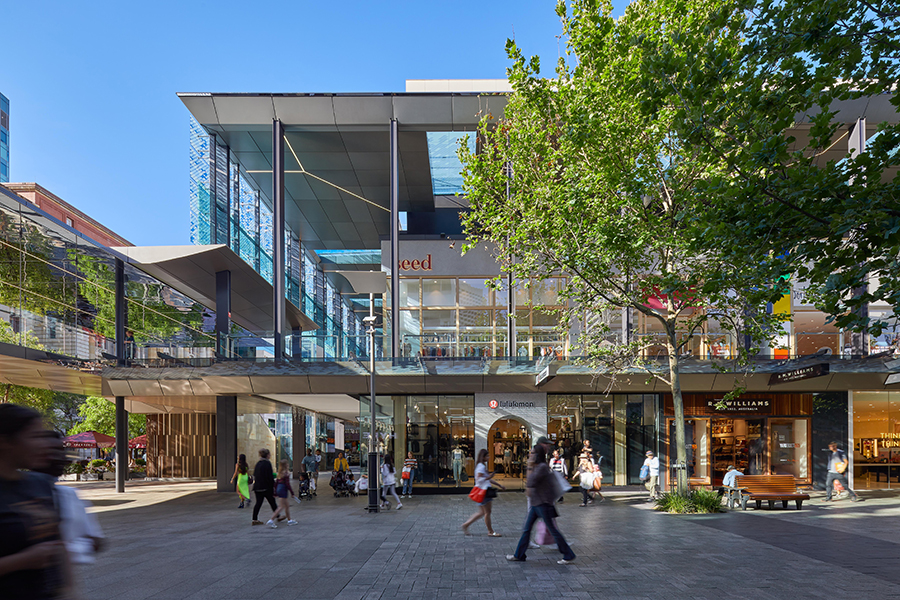
Perth
CBRE Senior Director & WA Head of Retail Fred Clohessy said, “The drop in Perth CBD strip retail to 24.2% was driven by continued strength in Perth’s core retail strips (Murray Street Mall, Hay Street Mall, William Street and the developing luxury precinct immediately west of the Murray Street Mall). After an extended period of relatively higher vacancy and rental correction, Hay Street Mall stabilised in H2 2023 and has shown signs of gradual improvement.”
“Looking forward, Perth CBD’s retail vacancy is expected to continue to improve in 2024 driven by the city’s nation-leading return to office occupancy, Western Australia’s strong economy, tourism growth and ongoing demand for luxury products. Longer-term, the scheduled completion of ECU’s city campus in late 2025 will also be a key catalyst for a continuing improvement in the vibrancy of Perth’s CBD retail market.”


